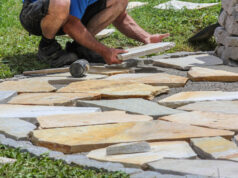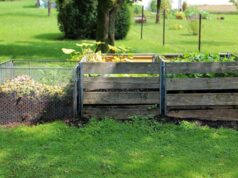With summer coming to a close and fall settling in, it’s time to start thinking about the gardens. This means gearing up for that annual task of canning or freezing tomatoes for many gardeners.
If you have a garden, chances are you’re growing tomatoes. And if you’ve been diligent about watering your tomato plants, you may be noticing some changes in their growth. Tomatoes should never be watered until their soil is dry. Even if they look thirsty from the rain or from being watered earlier in the day, give them a few hours without water before giving them more water. This will help prevent over-watering and other problems with the plant.
Don’t let your tomatoes become too stressed out! This article explains how to save over watered tomato plants:
Why it’s important to prevent over-watering
Over-watering is one of the most common mistakes made by gardeners. When you water your plants too often, the roots stay wet and become susceptible to fungal diseases. This can also lead to root rot, which will kill the plant.
In addition to diseases, over-watering can also cause plants to grow more slowly and can make them more susceptible to pests. It can also cause the soil to become compacted, which will make it harder for the plants to get the nutrients they need.
Watering your plants correctly is essential for their health and well-being. Follow these tips to help prevent over-watering.
Watering your tomato plants too much could be causing several problems including:
• Over-wetting. Watering tomatoes too much can cause them to become waterlogged and quickly wilt.
• Water stress. Keeping tomatoes wet for long periods can also cause the leaves on their stems to turn yellow. The stems will wilt, the plant will stop producing new leaves, and the plant may die.
• Slower growth. Over-watering causes tomatoes not only to grow slower but also takes up more space in your garden than they were before you added them (more water needs to be applied to keep tomatoes growing).
What happens when you over-water a plant
When you over-water a plant, the roots may rot. This is especially important for tomato plants because they have a shallow root system. Giving too much water to these plants can cause them not to pull up adequate nutrients from the soil and weaken their initially moderate growth.
Over-Watering a Plant – Over-watering also creates an environment where diseases can take hold of a plant’s leaves or fruit. Most of us don’t know about how to save over watered tomato plant, so we always tend to add liquid fertilizer as recommended in container instructions. The liquid fertilizers are usually nitrate-based, and those rates are often three times higher than the plant needs. This added nitrogen causes lush top growth that stays wet longer, and eventually, the roots can’t get enough oxygen to survive.
Watering too much will cause your tomato plants to become stressed. Stress causes a plant to produce more tomatoes than it needs, and if this happens, it can lead to problems for you. For example, growing tomatoes for good flavor and taste takes a lot of time and effort. However, stress can also lead to failed harvests or smaller tomatoes than you’d like.
How to save over watered tomato plant
Remove the tomato plants from their pots if they have been exposed to the sun – especially if they have been in the direct rays of the sun for an extended length of time.
If this is not possible, place them back in their pots so that they are able to soak up more sunlight. This will help prevent over-watered tomatoes from wilting.
If you want to increase your tomato yields, you will need to water them more frequently – as often as weekly. If tomatoes get too stressed out, they may stop growing and become incapable of producing anything. So it would be best if you were watering them more frequently than once a week or even once every two weeks. This will keep them happy and full of life!
For your tomatoes to spread out and grow, they need heat. No matter how much you water them or how often you let them dry off in the summer months, there’s no way you can completely remove all that humidity from your garden. By placing a pot under a fan (or air conditioner) during hot weather, it’s easy enough to keep your tomato plants happy and healthy. Attach fans directly above your tomatoes so that it won’t take up much room in your greenhouse or shed!
Reduce watering frequency
Choose a less frequent watering schedule if you want to save water and keep your plants happy. Sprinklers are ideal for this. You can use them when your plants are small or in the heat of summer when they need more water. The fewer times you water, the less stress your tomato plants will experience.
Increase the distance between plants
– Water is a stressor, so it’s important not to let your tomato plants get too close together. Watering the plants too close together will cause root problems and weaken the plant. The longer the distance between the plants, the more air circulation your tomatoes will have. Cauliflower is an example of a plant that grows in three different directions. It’s best to space them out as far apart as possible.
Add organic material to the soil.
A healthy tomato plant needs organic matter to help it thrive. The best way to introduce this organic matter into your soil is to mulch. You can buy a sheet of newspaper or cardboard and use it as a mulch, but other options work just as well. You can place paper directly into the soil, or you can add peat moss to the bottom of your potting mix.
You’ll want to space out these layers so you’re not crowding your plants with too much mulch on top of their roots. Mulching will prevent over-watering and other water-related problems from occurring in your garden.
Mulch with hay or straw
Thiswill keep the soil cool, which encourages deeper roots. The mulch will also retain moisture in your soil longer than if you were to plant without it. It’s important not to use hay with weed seeds as they can sprout up later.
Nurture your tomatoes with compost tea. Tomatoes are heavy feeders that need lots of nutrients for their fruit production. You should be fertilizing them every three weeks or so during the growing season, but there are other options if you’re running low on time or funds. Compost tea is an environmentally friendly alternative that boosts the health of your plants while adding beneficial microorganisms back into your soil.
To prevent pests, try companion planting near peppers and basil, both of which help repel the tomato horn worm.
Provide shade from sunlight
Tomatoes need shade to prevent sunburn, and too much sunlight can also stress out your plants. Keep your tomatoes in a shady place.
If you’re having trouble getting your tomatoes to ripen, you may need to provide them with some shade. Sunscald can cause the fruit to turn white or green on the blossom end. One way to prevent this is to provide some shade for the plant during the hottest part of the day. You can do this by using shade cloth, planting taller plants next to your tomatoes, or building a simple structure out of wood or PVC pipe.
Cut back on fertilizing and pruning.
One of the most effective ways to grow tomatoes is by planting them in an area that gets regular watering. Even though it’s easy to water your plants once a week, you can ensure that they get the proper nutrients. It’s important to prune only when necessary—don’t cut too often!
To ensure that you don’t over-water, create a drip irrigation system with a water hose and at least one timer for each plant. This will allow you to control how much water is being given to the plant. If your plants are under-watered, they’ll need more moisture rather than less.
Conclusion
The most important thing to remember when considering how to save over watered tomato plant is that the soil should be moist, not wet. If you doubt how much water your plant needs, it’s best to err on the side of giving less water than more. You can also try adding a layer of mulch around your tomato plants for better moisture retention and healthier roots. Now go out there and make sure those tomatoes have everything they need!








